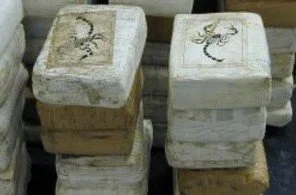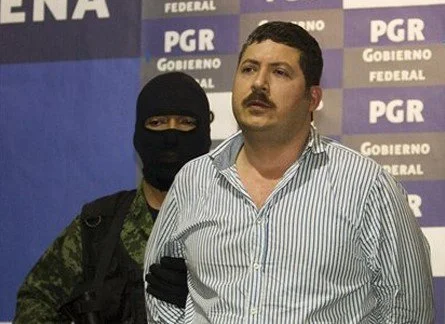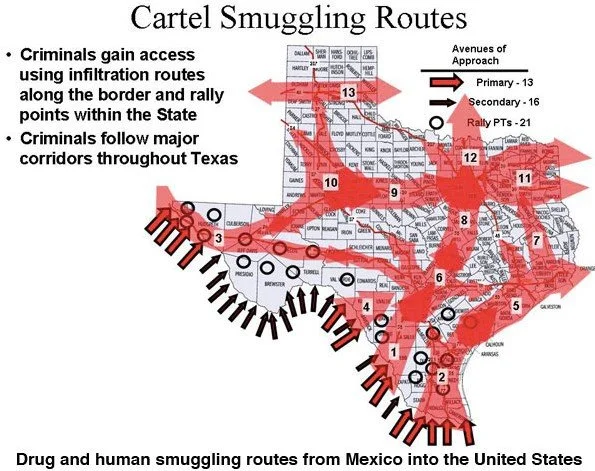Mexico's Drug Wars
In M’TAM(the oldest Traditional Initiatic Education known to humanity), we are taught to observe a phenomenon in its many sequences which all contribute to the final outcome, because any one cause can be seen as the main contributing factor to a unknowing observer. We are conditioned by modern science and colonial education to usually perceive the last event in the chain of sequences as the cause of a phenomenon. If this were true, what about the other thousand possible causes we can attribute to a certain effect or outcome. Any one cause we decide to choose, which seems to make sense to us, is only arbitrary depending on who else is viewing the same outcome because the cause they choose may be totally different from what we choose.
In 2008, it was estimated over 5,000 people were executed in Mexico’s drug war and more than 3,000 this year, making the “drug war” more deadly than the actual drugs. Many people have lost their lives as a result of power, money, manipulation and corruption. The Sinaloa Cartel, Juarez Cartel, Tijuana Cartel, Gulf Cartel, Los Zetas and La Familia are well known drug cartels that have been involved in this ongoing battle for quite some time. The drug wars have grown more intense over the past few years. They have gained even more momentum since Colombian drug cartels began to search for new routes into the United States, considering their South Florida routes have become more of a risk.
These Colombian cartels initiated negotiations with the Mexican cartels promising money if they could help traffic drugs into the United States. This only lasted a short time because the Mexican cartels envisioned the amounts of money and power they could acquire by them¬selves if they excluded the Colombians. This has been the way Mexican cartels have gone about it for awhile. Although Colombians are still exporting illegal drugs to Mexico that are eventually sold in America and other places, the Mexican drug cartels are their own bosses now.
The Mexican government is at a stand still as to what should be done because they are being out gunned by the cartels. The cartels are growing in numbers due to the fact that many who once worked for the Mexican government, police department or were part of the military are now joining the cartels. Mexican government can’t come close to paying as much money as the cartels are willing to pay them. Many are being hired as hitmen or assassins easily, also out of fear of being killed by the cartels.
The cartels are terrorizing the country with public acts of violence. Bodies are turning up all over, many are found beheaded, burned or dismembered to instill fear in the opposing cartels, Mexican government officials, and anyone else who is observing. Most victims are involved directly with the cartels but some are innocent civilians that are kidnapped or murdered for no apparent reason. Some cartels have even went as far as posting killings on YouTube for the world to see. Mexico is turning into one of the kidnapping capitals of the world which is affecting the economy because tourists are afraid to travel to certain cities.
The level at which the cartels are functioning is becoming much more refined than your average street gang. They employ the world’s best computer technicians, accountants, lawyers, doctors, etc. If this continues, the Mexican government may find itself in a position were it must either surrender the country, join the cartels or be destroyed.
The epicenter of violence in Mexico remains Ciudad Juarez, where nearly 2,000 people have been murdered in a drug/mafia war over the past year and a half, many of them are just boys (although some are young girls too). 80% of the victims are younger than 25 years old. Many people throughout Mexico have suffered due to the violence but the areas where the most violence occurs are Baja California, Guerrero, Chihua¬hua, Michoacan, Tamaulipas, Nuevo Leon and Sinaloa.
The Mexican drug cartels are recruiting very young soldiers to fight.The violence is fueled by the cartels who have begun seeking younger and younger recruits. The cartels recruit young boys from the School of Social Betterment for Minors (and schools similar) on the outskirts of Juarez. They target young delinquents who usually are in these schools for robbing, killing or selling drugs.
“Sicaritos are children who are assassins, 13 or 14 years old,” says Soto, a high school student. “The cartels give them a weapon to use. It’s easier for a boy. If he’s older, he thinks too much, he may think about the consequences. But when you’re young, you think you can take on the world.” “To be an assassin, you can’t think,” says Daniel, 16. “You just do it, grab a pistol and go kill somebody, or whatever. It doesn’t matter if you die or not.” Soto adds, “If you don’t have a mother or a father, you have no one to believe in you, then it’s easy to fall into this, to be a delinquent.” Their immaturity and naivety produce fearlessness. For young boys who are marginalized by society, cartel membership brings instant respect, power and social recognition.
Who is to blame? The government? It doesn’t have much time to provide healthy activities for the young people to take part in due to the country’s internal turmoil. The parents who already live in fear that one day their family may be killed by the escalating violence? Criminal activity and trouble are what is left to occupy the youth’s time. Young people don’t have much of a choice growing up in a environment that shows them that it’s ok to kill, steal or sell drugs. Many youth get involved because joining a cartel becomes their means for survival and some have even expressed their desire to avenge the killing of relatives or friends. Poverty and lack of access to educational or work opportunities are additional factors. Family and peer pressure also play a factor in youth joining forces with a drug cartel. Unfortunately, child soldiers exist in all regions of the world in almost every country where there is armed conflict. As long as the world is being ruined by corrupt government mafias, this will continue to be the trend worldwide.
Firearms are not legally available for sale in Mexico, so drug cartels must smuggle them through the U.S. or Guatemalan borders, or by sea. The United States is known to be a main supplier of weapons in this ongoing drug war in Mexico and Central America. It is estimated that 95% of weapons used in the drug war are arriving from the United States illegally. It is also estimated that over 2,000 automatic fire arms each day are making its way across the border into Mexico.
Only one day after offering $2 million for tips leading to top drug lords, it was announced Wednesday that Hector Huerta Rios, also known as "La Burra" or "El Junior," was arrested Tuesday in San Pedro Garza Garcia in Nuevo Leon state. Whether this is the real “Drug Lord” or not, the problem continues
Illegal drugs aren’t foreign to US soil. The United States is one of the biggest drug markets in the world. How is this possible, considering that “The War on Terror” has allowed the United States Congress to pass bills that have basically led to all US citizens surrendering their rights of privacy they once had? In a time of economic crisis, it is not a surprise that violence is steadily climbing especially along the border of the US. People are becoming more desperate and impatient due to the money issues taking place across the globe.
The United States government has a long history of importing drugs into this country, even while they were advertising the famous slogan that is very similar to the one we have been recently bombarded with since 9/11. The “War on Drugs” slogan preceded the now famous “War on Terror”. The History of the “War on Drugs” in the US started back during Richard Nixon’s administration but was made more popular by the Regan Administration. Nancy Reagan’s famous quote was, “Just Say No”. This was in the early 80’s when crack cocaine started to “mysteriously” find its way into every poor predominately minority community. Crack cocaine has and continues to devastate inner city communities all over the country. Many communities still have not recovered because crack cocaine isn’t the only drug that is made easily available at cheap prices. Heroin, methamphetamines/ amphetamines, and marijuana were responsible for 8,736 drug deaths in one year in the US. So the question remains, what happened to the “War on Drugs”? We don’t hear about it anymore even though the number of people using drugs continues to increase, the number of drug related crimes continues to increase, the number of deaths due to overdose continues to increase. The drug war in Mexico is just as big of a problem for the people of the US as it is for the people of Mexico because the drug cartels are rapidly establishing themselves in American cities like Atlanta, New York City, Anchorage (Alaska), Chicago, even rural Tennessee and South Dakota.
What is really being done about this? We must be honest in our assessment of our government and their agenda(s). If the goal of this country was to put an end to drug trafficking within its borders, an effective plan would have been implemented to make sure it is done, considering they have the means to do so. Maybe that was never an honest goal of this government, especially considering how much money they make in their involvement with drug trafficking and how many minorities were imprisoned with the “War On Drugs”. It is estimated that the United States government makes close to 38 billion dollars a year from the drug trafficking that is taking place at our Mexican border.
The United States is no stranger to war. Nearly every war that has taken place in modern history, we were either at the center of it or we played a significant role. The United States’ continued pursuit for power has allowed them to be positioned as the number one world “super power” and with this being the case, we have interest all over the world and will go to great lengths to get what we want at any cost, bottom line!




